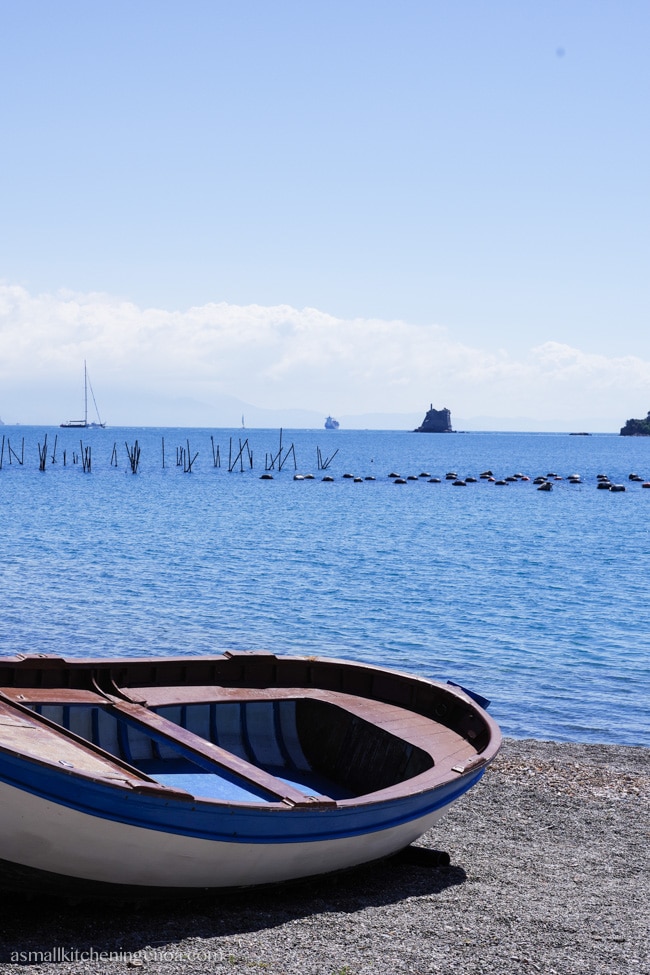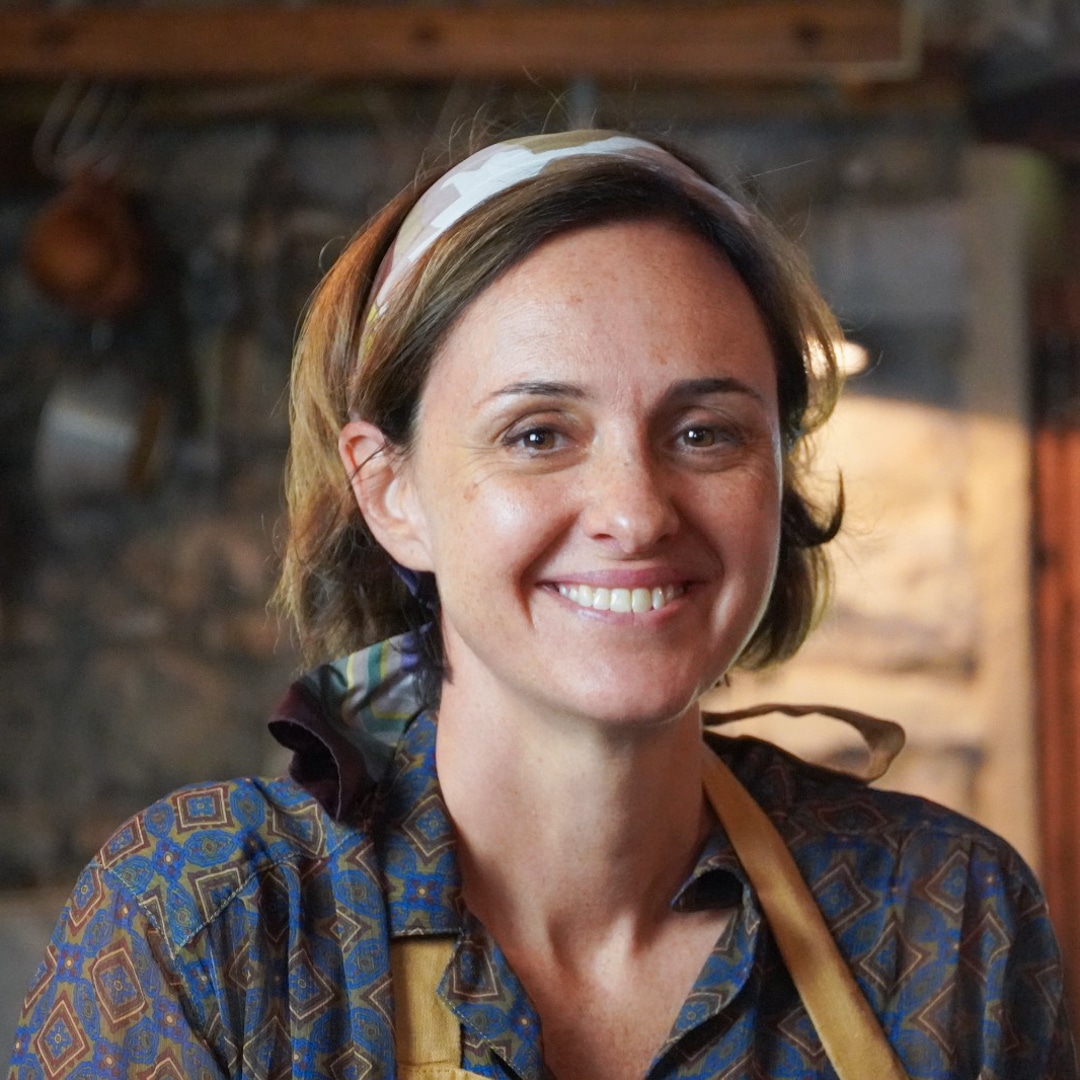
Last summer at a small restaurant on the beach of Bogliasco (tables straight on the beach, noise of the waves as background music and feet in the sand) a friend of mine, regular at that place, ordered for me.
What arrived on the table, to my great surprise, was a steamy plate of linguini with mussel ragù! This is not a common dish, and it reminded me that recipe I had read just few days before in an ancient and famous Ligurian cookbook “La cucina di strettissimo magro” (literally : cuisine for the sacrifice days). It was written by a priest, Father Gaspare delle Piane, in the middle of the 19th century, to help housewives preparing tasting dishes also during sacrifice days, when according to Catholic Church eating meat and any animal derivate was strictly forbidden.

The recipe had impressed me because it made me smile. Among the possible “basic” ingredients of this pasta sauce there are in fact also 50 oysters (yes!), to be cooked in a pan and then pass through a sieve! But after all this is one of the funniest features of the book, which is studded with recipes that provide for the use in abundance of expensive or very rare ingredients for us, such as the recipe for the Turtle Salami (“add a kilogram of turtle of sea or land … “), that of the turtle egg omelette (turtle eggs: 20) that of the pasta with roasted truffles (truffles gr. 90), or the sea otter pudding (however it does not say how much the sea otter must weigh !).
Last year, after having really enjoyed the dish, I promised myself to make the mussel ragù with the recipe from Father Dellepiane shortly. Instead, also thanks to the fact that the recipe was permanently associated with a summer evening by the sea, I let a year go by.


The original recipe provides for cockles, clams and oyster as main hero, because those were the molluscs available at the time. The cultivation of mussels is in fact was introduced in Liguria (and become very popular) only in a later period. To know more see the paragraph after the recipe.
I am sure, however, that if Father Dellepiane had mussels available he would certainly have included them in the recipe because the sense of this recipe is to prepare a pasta with an intense sea flavor.



The unusual and surprising ingredient of this sauce, which is also very common along the cookbook are pine nuts. Crushed roughly in the mortar and diluted with cold water, in fact, they create a cream similar to milk – called precisely “pine nut milk” – which gives the sauce creaminess (pine nuts are rich in fats) and crunchiness (due to the remaining pieces of pine nuts) .
In the photos above you find the original recipe. Here below the one I have rewritten and slightly modified to adapt it to today’s cuisine. I hope the result honor the undisputed genius of its original author. I loved it so much. The doses are for 4 people.

Ingredients
- 2 kg of mussels
- 2 salted anchovies
- 1 clove of garlic
- 1 bunch of Italian parsley
- 30 g of pine nuts
- 8 tablespoons of extra virgin olive oil
- salt
- 400 g of linguini or spaghetti
Instructions
- Put the muscles, shell cleaned, in a saucepan with high edges without adding anything, cover with a lid and cook on a low heat until they are all open (about 5 minutes).
- Set aside the broth they will have released.
- Remove the shellfish from the shells (keeping some whole aside to decorate the dish – which I forgot to do …) and chop them with the mixer without reducing them in cream, be careful, or with the knife.
- Chop garlic, anchovies and parsley together (keep a little parsley, chopped, a side to garnish the dish) and sautè everything in a shallow pan with the oil for a couple of minutes and no more.
- In the meantime, pound the pine nuts in the mortar, or chop them in a mixer (even if the mortar is preferable) until you get a raw paste and dilute with a ladle of cold water: you will get the “pine nut milk”.
- Add the pine nut milk to your soffritto and cook for 5 minutes.
- Then pour the broth released from the muscles and the chopped muscles. Leave to simmer for 5 minutes or until the sauce has reached the right density. Add salt if necessary.
- Cook the linguini in a big pan plenty of salted water and drain them al dente. Pour them directly into the shallow pan with the sauce and sauté for a couple of minutes.
- Serve the pasta with a drizzle of raw extra-virgin olive oil, a handful of fresh chopped parsley, a grated of black pepper and garnish the dishes with a couple of whole mussels each.

The tradition of mussel farming in Liguria


In Liguria mussels have been successfully cultivated in the Gulf of La Spezia since the end of the 19th century thanks to the favorable morphology and environmental conditions: depth of the seabed, underground currents of fresh water and above all lack of storms.
[Quick Italian language note: in Liguria mussels are called “muscoli” (from the latin musculos , same root of the English language), in the rest of Italy they are called “cozze”, which is the southern Italy term, more common nowadays].
Mussels are bred in nurseries consisting of poles planted on the seabed or floats connected together by nylon ropes, stretched below the level of the wave motion, to which the so-called “pergolas” or “reste” on which mussels grow are knotted.
During the breeding cycle (varying from thirteen to fifteen months) the nets are replaced several times, using increasingly larger meshes suitably growing.
After three months from the insemination and then, every forty-five days, the nets are hoisted and left under the light for twenty-four hours, in order to block the formation of parasites or algae, and dead or smaller mussels are eliminated.
At the time of harvest, the mussel farmers, on board their boat called “schio”, grab and hoist the ropes with clinging mussels and choose the larger ones.
JOIN ME ON MY FOOD JOURNEY
Get my monthly newsletter with fresh recipes, my latest food adventures, upcoming events, and lots more from the sunny Italian Riviera!





